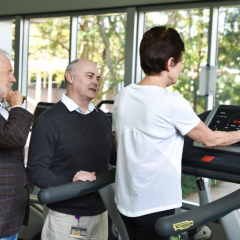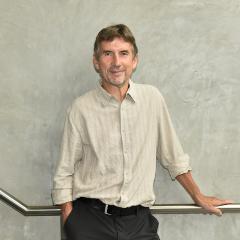QBI scientists are part of Australia’s first research centre focused solely on tackling brain cancer in young people.
Dr Jens Bunt is one of the lead scientific investigators in the Centre for Child and Adolescent Brain Cancer Research, funded by the Children’s Hospital Foundation.
The centre will see researchers and doctors join forces to develop improved treatments for brain cancer, and understand the immediate and long-term needs of affected children and their families.
Dr Bunt works in the Brain Development and Disorders laboratory, headed by QBI’s Deputy Director Professor Linda Richards. Some brain tumours in children originate from tumour cells formed during the early development of the brain. Dr Bunt investigates the biology of these brain tumours and the cells from which they originate to understand the mechanisms that normally keep cell growth and development in check, and how these mechanisms are disrupted in aggressive brain cancers. The ultimate goal is to provide essential knowledge that allows the development of new therapies and improved diagnostics.
A new type of brain tumour
While Dr Bunt’s previous work has focused on glioblastomas and medulloblastoma, the new centre and its accompanying funding is allowing him to expand research into a new type of tumour, Embryonal Tumours with Multilayered Rosettes (ETMRs).
If that name does not sound familiar, there is a good reason: ETMRs have only been recognised as a separate tumour type since 2016. However, based on its unique molecular signature, we now know it is very different from all other brain tumours.
Dr Bunt stresses the importance of learning more about ETMRs.
“ETMRs form during the brain’s development, and it is usually diagnosed in children under two. It’s a very aggressive tumour and fewer than five per cent of patients are alive two years after diagnosis, with the median survival time being nine months.
“These tumours look and behave very differently to other brain cancers and they don’t seem to respond to any of the current treatments. To develop better therapies, it’s vital that we understand the biology behind the formation of these tumours.”
Tumour cells are just behaving childishly
One of the challenges of developing effective treatments for ETMR is that these tumour cells closely resemble immature cells found in the normal developing brain. While other brain tumours have very distinctive features that set them apart from normal cells, these ETMR cells seem just immature. We need to discover what is unique about these tumour cells to enable us develop drugs that only target the tumour and not the healthy brain.
Dr Bunt explains, “Each cell is like a child. In the beginning, they just grow. They can still become anything in life. But when they get older, these cells stop growing and gain an “education”: they all learn how to perform a specific job and together form a healthy brain. However, if one of these cells decides it doesn’t want to learn and commit to a job, it remains like a baby and keeps growing. I want to know why they didn’t learn and whether there is a way to still teach them to behave more mature.”
Dr Bunt is interested in how these immature cells normally grow and differentiate into highly specialised cells with particular functions. In the brain, for example, an immature cell might go on to form a neuron or a supportive cell, such as an astrocyte or oligodendrocyte. But in cancer, this growth and development goes awry, and Dr Bunt wants to understand why.
His work is an example of the fundamental research that is the first step in developing new, targeted treatments for poorly understood diseases like ETMR that will ultimately give young patients a better chance of survival.
Teaming with the best
If you want to study a newly classified tumour type, who better to team up with than the experts in that tumour? Professor Marcel Kool from the German Cancer Research Centre is a world leader in the genomics of paediatric brain tumours, especially ETMR. His knowledge, combined with the expertise of Dr Bunt, Professor Richards and local paediatric oncologist
Dr Tim Hassall, promises to be a fruitful collaboration that will produce genuine advancements in our understanding of brain cancer in young children.
As part of the Centre for Child and Adolescent Brain Cancer Research, UQ will provide funding for a PhD student to help progress the research, while the Queensland Children’s Tumour Bank, led by Dr Andy Moore, will provide samples for analysis.
It’s this combination of local and international expertise that the centre is designed to facilitate, ensuring researchers can harness the knowledge that they need, whether it’s located across the Brisbane River or on the other side of the world.



